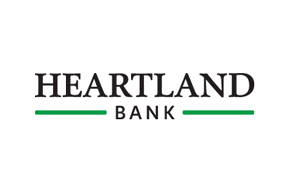
Heartland Bank says the Reserve Bank has consented to the reduction of its regulatory capital requirements, bringing them in line with other New Zealand registered banks.
The Reserve Bank granted Heartland bank registration in December 2012 but forced it to hold higher minimum levels of capital than other banks.
Heartland has been required to have a common equity tier 1 ratio, as a percentage of total risk weighted assets, of at least 10% versus the 4.5% required by other banks. Heartland's had to have a tier 1 capital ratio of at least 12% versus 6%, and a total capital ratio of at least 12% versus 8% for other banks. Heartland hasn't, however, been required to maintain a minimum "buffer" ratio of 2.5%.
"Heartland Bank’s conditions of registration will be amended on 31 January 2015 to reflect its new regulatory capital ratios being: Total capital ratio not less than 8%, tier 1 capital ratio not less than 6%, common equity tier 1 capital ratio not less than 4.5%, (and) buffer ratio of 2.5%," Heartland says.
"Although Heartland Bank holds capital in excess of regulatory minimums, there is no current intention to reduce the amount of capital held at the bank level," the Heartland says.
As of September 30 Heartland had a common equity tier 1 ratio, as a percentage of total risk weighted exposures, of 13.99%, tier 1 capital ratio of 13.99%, and total capital ratio of 14.09%. Its buffer ratio was then 1.99%. See more on the Reserve Bank's bank capital adequacy rules here.
Formed through the merger of Marac Finance, CBS Canterbury and the Southern Cross Building Society, Heartland targets niche markets incorporating small and medium sized businesses, the rural sector and the retail and consumer sectors. Heartland bought the good loans of rural lender PGG Wrightson Finance in August 2011.
Heartland also completed the $87 million acquisition of reverse equity mortgage businesses Sentinel and Australian Seniors Finance from Seniors Money International on April 1 last year. And in September Heartland bought a 10% shareholding in New Zealand's first licenced peer-to-peer lender Harmoney, and is lending an undisclosed amount of money through Harmoney's online platform.
As of September 30 last year Heartland had total capital of $338.520 million. Of this $336.094 million was tier 1 capital, and $2.426 million tier 2 capital. At the same time the bank had total assets of just under $2.5 billion, with finance receivables of $2 billion.

We welcome your comments below. If you are not already registered, please register to comment.
Remember we welcome robust, respectful and insightful debate. We don't welcome abusive or defamatory comments and will de-register those repeatedly making such comments. Our current comment policy is here.